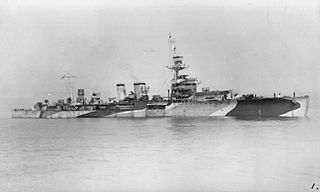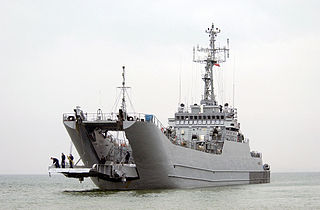This article does not cite any sources .(December 2009) (Learn how and when to remove this template message) |
| History | |
|---|---|
| Name: | ORP Gryf |
| Ordered: | 1975 |
| Builder: | |
| Launched: | 1976 |
| Commissioned: | 1976 |
| Decommissioned: | May 31, 2005 |
| Fate: | converted to base ship |
| General characteristics | |
| Class and type: | Wodnik class |
| Displacement: |
|
| Length: | 72.24 m (237 ft 0 in) |
| Beam: | 11.99 m (39 ft 4 in) |
| Draft: | 4.1 m (13 ft 5 in) |
| Speed: | 16.8 knots (31.1 km/h; 19.3 mph) |
| Complement: | 56 + 100 |
| Armament: |
|
ORP Gryf (Wodnik class) is a Polish schoolship of the Polish Navy, the third vessel to bear that name. She is named after the notable Polish WWII minelayer. Built in Northern Shipyard in Gdańsk as a sister ship of ORP Wodnik, in 1976 she replaced the previous ORP Gryf in her role of a school ship.

Poland, officially the Republic of Poland, is a country located in Central Europe. It is divided into 16 administrative subdivisions, covering an area of 312,696 square kilometres (120,733 sq mi), and has a largely temperate seasonal climate. With a population of approximately 38.5 million people, Poland is the sixth most populous member state of the European Union. Poland's capital and largest metropolis is Warsaw. Other major cities include Kraków, Łódź, Wrocław, Poznań, Gdańsk, and Szczecin.

The Polish Navy is a military branch of the Polish Armed Forces responsible for naval operations. The Polish Navy consists of 48 ships and about 12,000 commissioned and enlisted personnel. The traditional ship prefix in the Polish Navy is ORP.

ORP Gryf was a large Polish Navy minelayer, sunk during the 1939 German invasion of Poland. She was one of two large Polish ships that were not evacuated to Great Britain during Operation Peking prior to the outbreak of the Polish Defensive War. She was sunk in Hel harbour on 3 September 1939 during the opening stage of World War II.
Prior to the Gulf War she was refurbished in Gdynia and became a hospital ship. In that role she was sent to the Persian Gulf and took part in the conflict. Currently she serves as a base ship and harbour-locked naval school of the Polish Navy.

The Gulf War, codenamed Operation Desert Shield for operations leading to the buildup of troops and defense of Saudi Arabia and Operation Desert Storm in its combat phase, was a war waged by coalition forces from 35 nations led by the United States against Iraq in response to Iraq's invasion and annexation of Kuwait arising from oil pricing and production disputes. The war is also known under other names, such as the Persian Gulf War, First Gulf War, Gulf War I, Kuwait War, First Iraq War or Iraq War, before the term "Iraq War" became identified instead with the 2003 Iraq War.

A hospital ship is a ship designated for primary function as a floating medical treatment facility or hospital. Most are operated by the military forces of various countries, as they are intended to be used in or near war zones.

The Persian Gulf is a mediterranean sea in Western Asia. The body of water is an extension of the Indian Ocean through the Strait of Hormuz and lies between Iran to the northeast and the Arabian Peninsula to the southwest. The Shatt al-Arab river delta forms the northwest shoreline.









